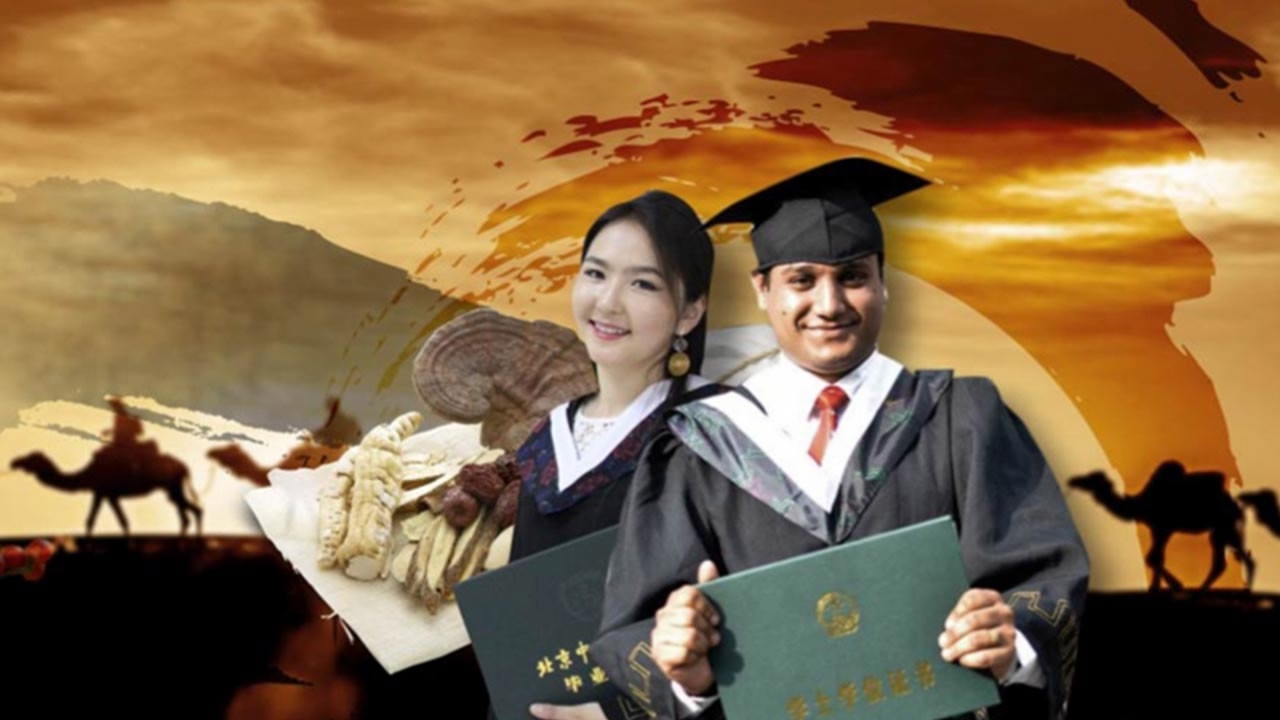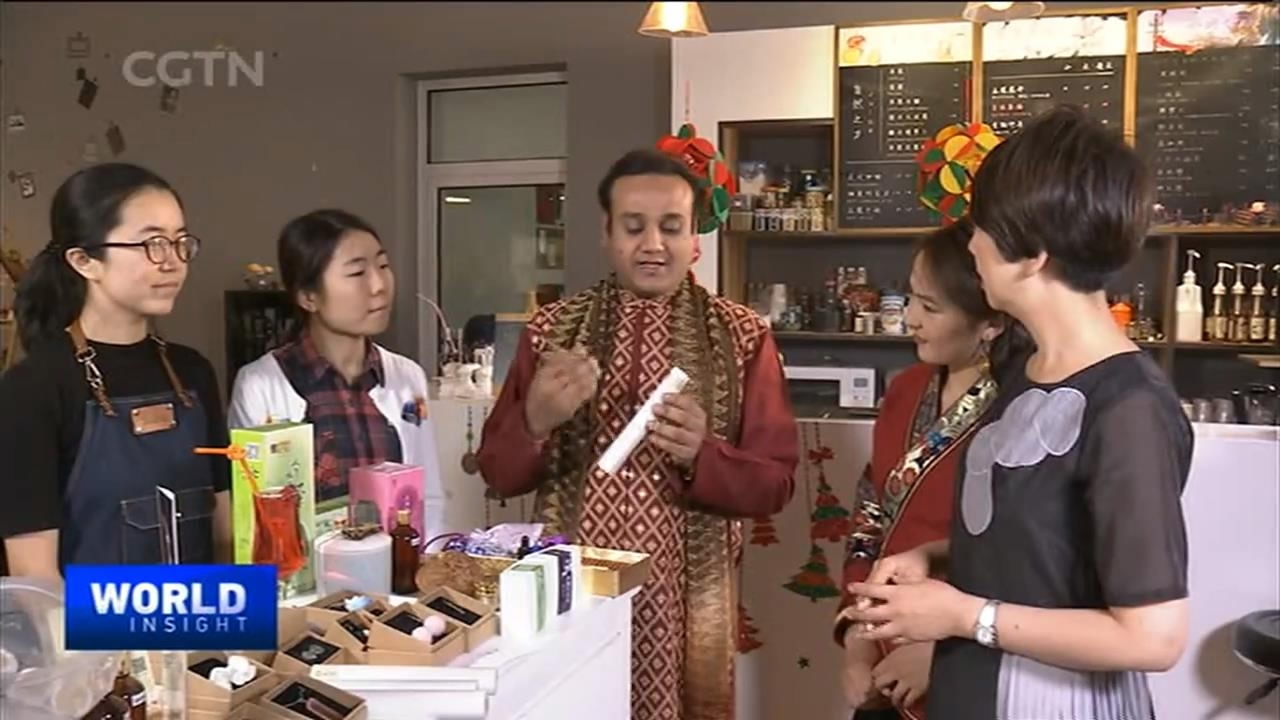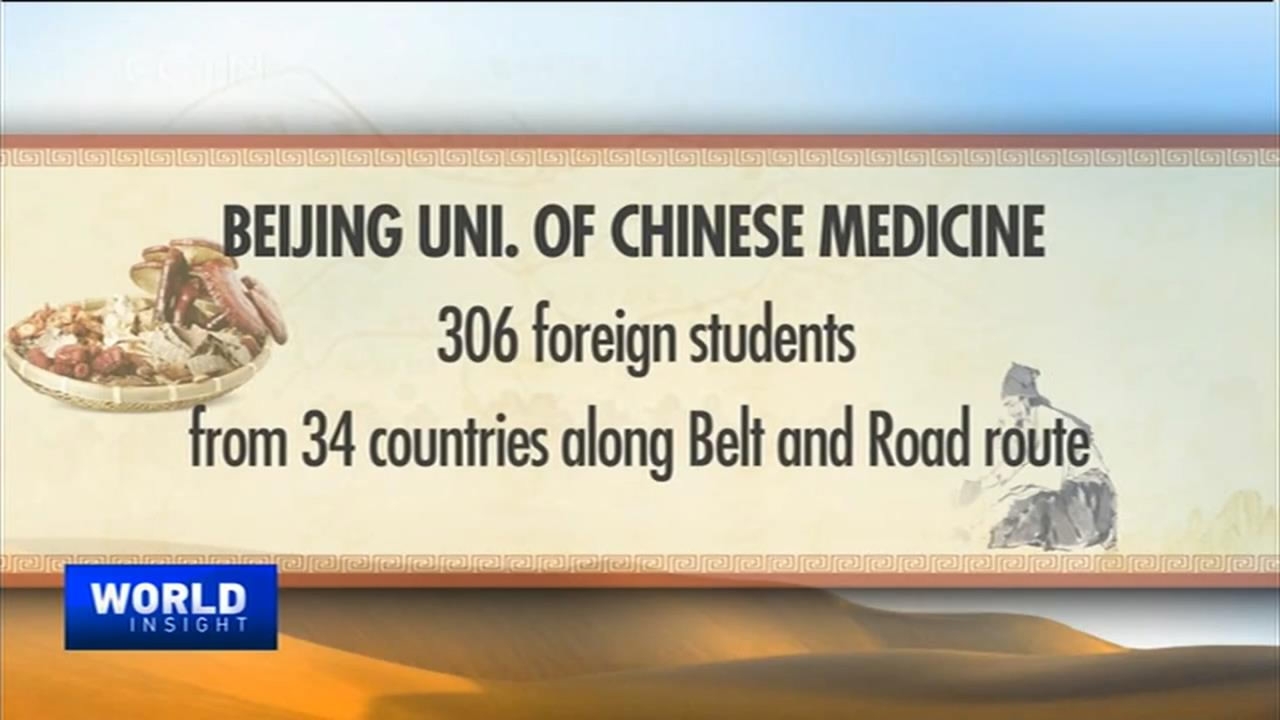BRI attracts more talents to learn TCM in China
2017-05-19 17:23 GMT+8

Editor
Zhang Ruijun
By CGTN’s Tian Wei & Ding Dai
The Belt & Road Initiative (BRI), through boosting connectivity, means beneficial exchanges from different countries. Traditional Chinese Medicine (TCM), a giant of China's heritage, is expected to win popularity across BRI nations.
To learn about foreign students coming to China to master TCM, CGTN’s Tian Wei went to Beijing University of Chinese Medicine. She was joined on the visit by Myadagabadam Boldbayar from Mongolia and Dr. Aditya Agrawal Kedia from Nepal.

CGTN Photo
In a creative space, foreign students can use their traditional Chinese medical knowledge to make medicinal products; examples of this include herbal tea, cosmetics and handiwork.
On the visit, Tian Wei felt that TCM has gone global through the BRI. She was also treated to acupuncture by two of the foreign students.

CGTN Photo
Between 2011 and 2014, over 30 countries along the route, including Russia, France, Malaysia, Italy, Australia and Qatar, expressed an interest in TCM collaboration with China, such as building TCM hospitals together.
Meanwhile, more foreign students are coming to China to learn TCM. Beijing University of Chinese Medicine is their top choice.

CGTN Photo
The university has been receiving foreign students for 60 years. Now there are 306 students from 34 countries along the Belt and Road routes. Some return home to run a clinic after graduation, while others join major medical institutions in their own country. In 2016, over 13,000 foreign students in China were learning TCM, making up three percent of the total.
The development of the BRI could result in training for more TCM talents from other countries, which will fuse the disciplines of western and eastern medicine.
Many believe that this is the significance of the BRI: greater connectivity not only makes a nation richer, but also healthier.
Copyright © 2017
